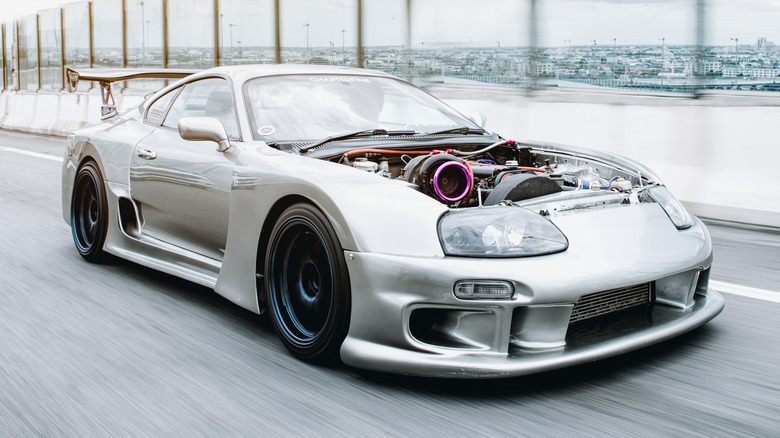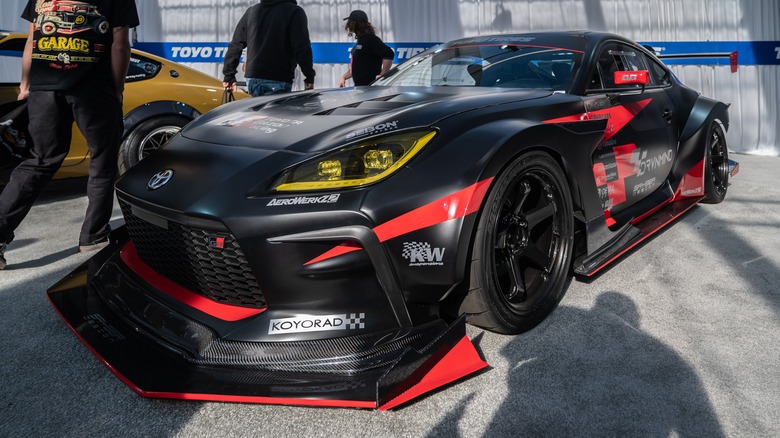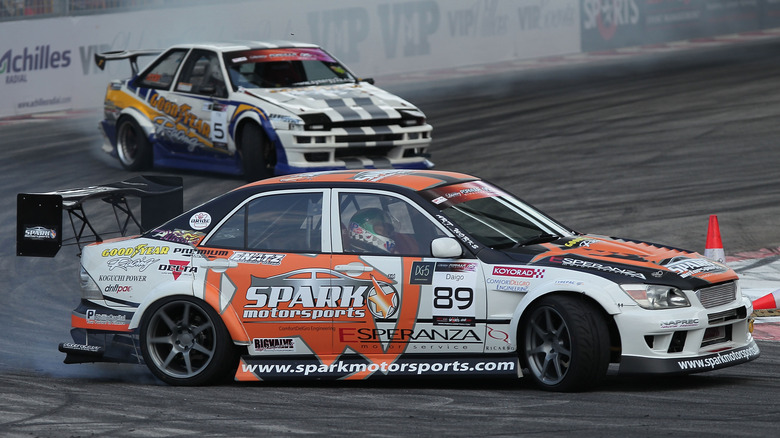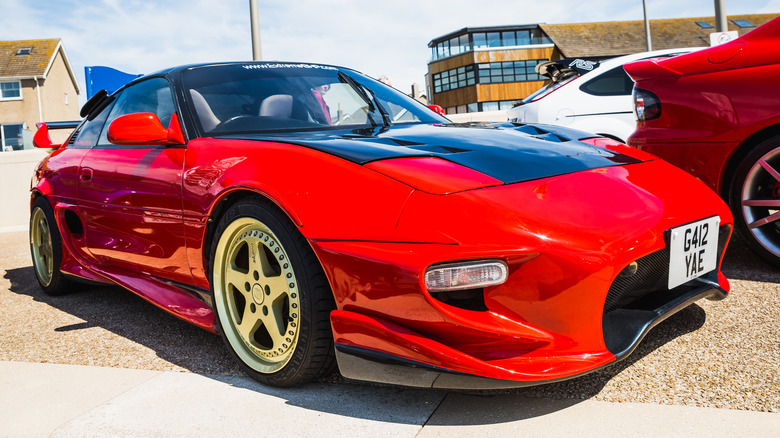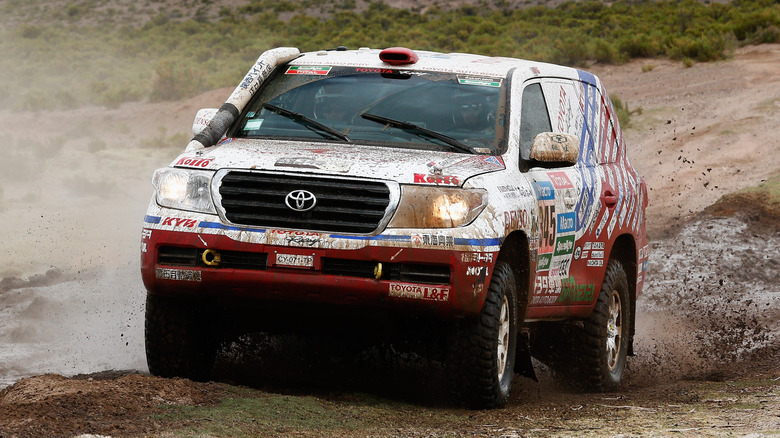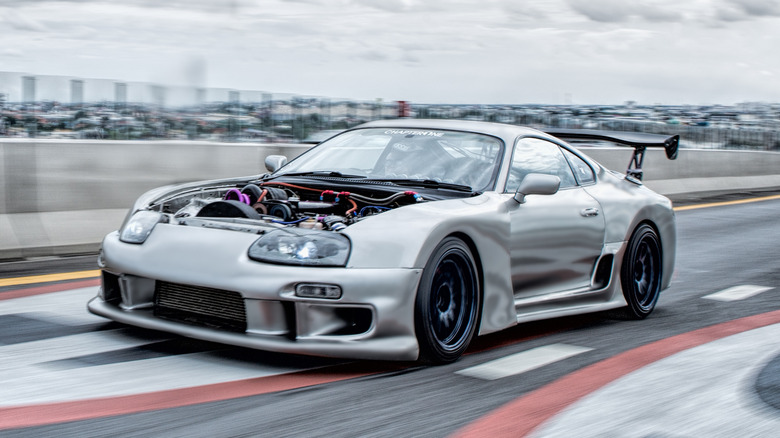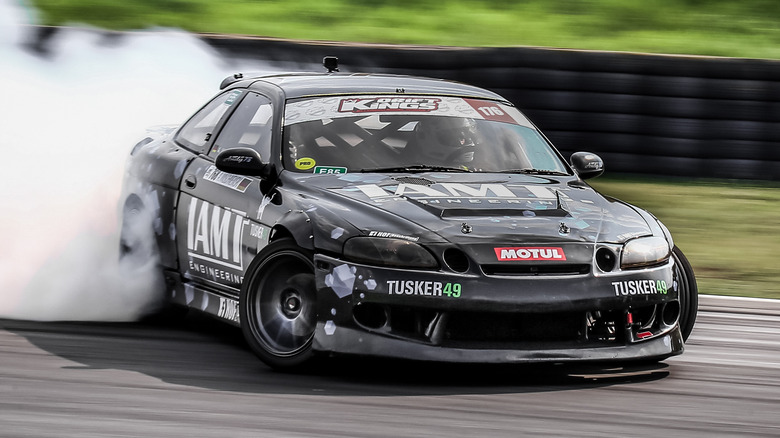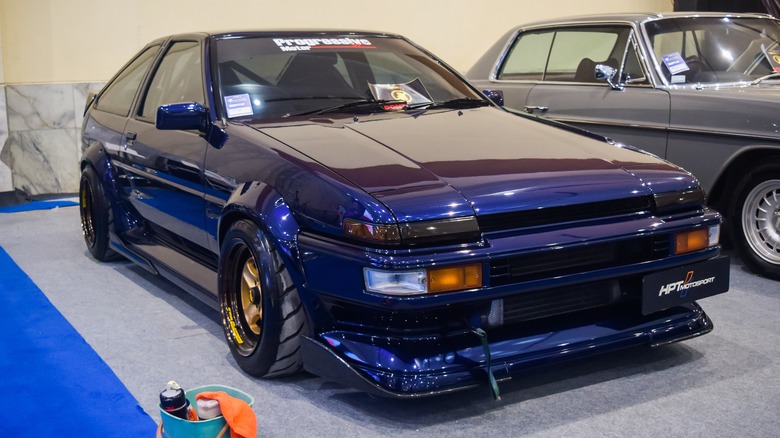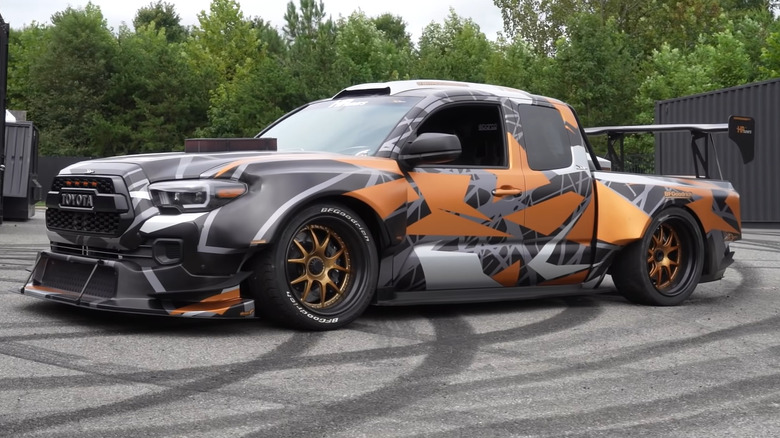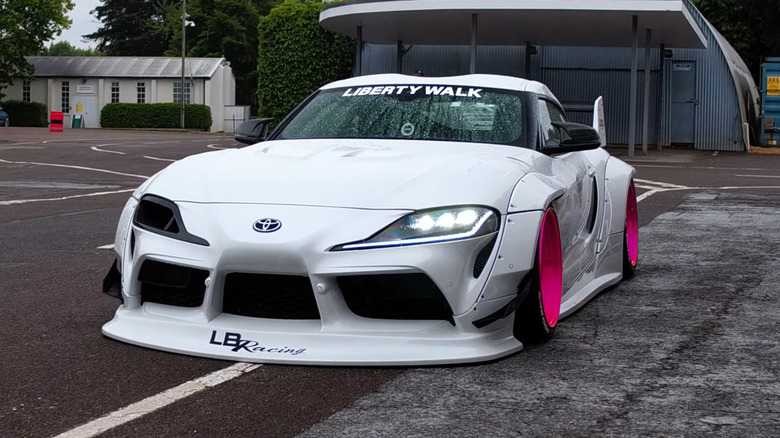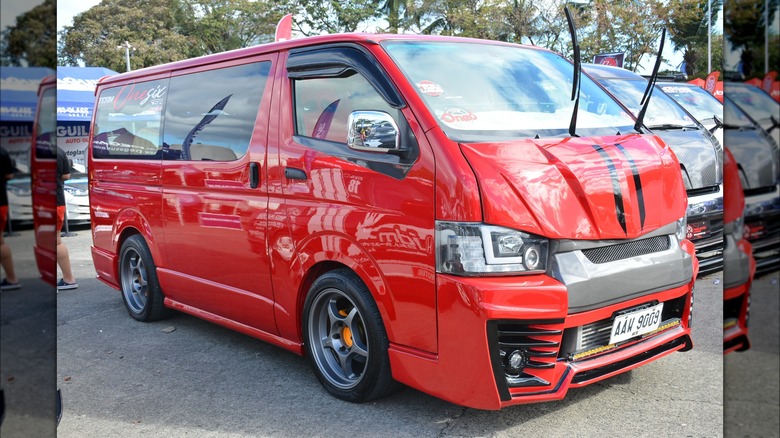Toyota Tuner's Dream: 10 Of The Most Modifiable Models Of All Time
Toyota continues to be the world's best-selling carmaker, shifting more than 10 million vehicles around the world in 2022. With so many Toyotas on the road, it's no surprise that many of them end up modified, either to improve their performance, their styling, or a mix of both. However, the range of different Toyota vehicles that boast their own specialized tuning scenes and aftermarkets is what sets the brand apart from other manufacturers.
Alongside JDM tuning icons, Toyota also produces a range of work-oriented cars, trucks, and vans, many of which have become modders' favorites in their own right. It's impossible to cover the tuning scene around every Toyota model, especially since the popularity of different models varies significantly around the world. Whether it's sports cars or work vans, buyers looking for a mod-friendly Toyota are never short on options. With that in mind, we've picked out ten models that have proven to be especially good starting points for projects.
Toyota GR86
Few current Toyota models lend themselves to modification quite as well as the GR86. Our review of the second generation GR86 noted how enjoyable it was to drive even in stock form, but the large aftermarket for the car means there's plenty of room for improvement. Unlike the first generation, we also thought the latest iteration was powerful enough, but there are plenty of enthusiasts out there who disagree. Those in the latter camp still have plenty of options, however, with Japanese tuner HKS proving the engine can be tuned to produce more than 400 horsepower with only minimal modification.
The GR86's affordable starting price and well-balanced chassis have made it the model of choice for a huge range of project car builders. These builds span everything from grassroots track day builds to professional conversions like Ken Gushi's tire-shredding Formula Drift car. Alongside aftermarket performance parts, there is also a wide range of body kits available for the car, ranging from mild facelifts to wild widebody kits with overfenders and huge rear wings.
Toyota Altezza/Lexus IS
The original Lexus IS was designed as an affordable way to draw buyers to the brand while competing against the BMW 3 Series. It was designed to appeal to both domestic and foreign buyers, but while the Lexus badge was gaining recognition in key export markets like the U.S., it had yet to be launched in Japan when the car's design was finalized. So, the solution was to badge it as a Toyota, and thus, the JDM Altezza was born.
While the car looks identical to its Lexus-branded counterpart from the outside, the Altezza was available with a different choice of engines to better suit Japanese tastes. The 2.0L inline-6 engine was shared with the IS 200, but the 2.0L four-cylinder, the more powerful of the two, was sold in the Altezza only. As a result, many modified Altezza builds are created expressly to be different from the raft of IS builds out there, featuring upgraded versions of the 3S-GE four-cylinder alongside other hard-to-find JDM parts.
Meanwhile, the IS300, which features a naturally aspirated version of Toyota's iconic 2JZ engine, has become a favorite among grassroots drifters thanks to its affordable used price and over-engineered internals. While it's not quite as potent as the turbo 2JZ, the IS300's engine still offers plenty of tuning potential. If that's still not enough, the generously sized engine bay can fit a variety of more tunable engines, including the 1UZ-FE V8.
Toyota MR2 Mk2
The MR2 remains an oddity among sports cars in that it's mid-engined, reliable and easy to work on, and yet still affordable. That has led to a large aftermarket forming around the car over the years, both in terms of performance parts and cosmetics. On the former side, the range of upgrades on offer can boost the car's output to double its stock figure with relative ease. On the latter, the many body kits and aero bits allow for almost infinite visual customization.
Whether it's a stripped-out track day toy or just an eye-catching street build, Toyota's cheapest midship car is perfect for upgrading. So much so, in fact, that it's actually tricky to find an entirely stock one -– most will have had some kind of upgrades in the decades since they left the factory. There's a long list of modifications that will be needed to squeeze every last drop of potential out of the MR2, but in most cases, the main limits are the builder's imagination and budget rather than the car itself.
Toyota Land Cruiser 200 Series
It might have built its reputation on being a no-nonsense, fiercely reliable off-road SUV, but the Land Cruiser is actually a surprisingly versatile base for modified builds. Of course, most builds center around enhancing the Land Cruiser's already formidable all-terrain capabilities by adding lift kits, skid plates, snorkels, and light bars. The exact spec of these builds tends to vary by territory. For instance, in the U.S. and Australia, it's most common to see Land Cruisers kitted out for overlanding, while many builds in the Middle East are instead designed to race across the desert.
However, there are also a number of Land Cruiser projects designed for conquering asphalt rather than dirt. Across places like Australia and the Middle East, it's not unheard of to see Land Cruiser drag racers sporting lowered bodies and hugely uprated power outputs.
Toyota's engineers have even got in on the action, unveiling what they dubbed "the world's fastest SUV" at SEMA 2016. The show car boasted a power output of 2,000 horsepower, which Toyota achieved by modifying the car's factory 5.7L V8 engine. Its stock chassis was also retained, albeit with extra reinforcement, and a roll cage and Momo racing seat were installed to complete the transformation.
Toyota Supra MkIV
For a generation of movie fans, the MkIV Supra is most famous for its role in the "Fast & Furious" franchise. However, it had already become a tuning icon long before Paul Walker drove one on the big screen. A big part of that tuning appeal was the 2JZ engine, particularly the 2JZ-GTE fitted in the Supra Turbo. The engine is famously over-engineered and could produce power outputs several times over its stock rating with only a handful of aftermarket parts.
This makes it ideal for competing in several motorsports disciplines, including drifting and drag racing. The most extreme 2JZ Supra drag builds today can push more than 2,000 horsepower and run the quarter mile in under seven seconds.
While drag, drift, and street builds are the most common to see, the Supra has also been modified to compete in a number of other motorsports over the years. In the mid-'90s, a Supra built by Clark Motorsports competed in the SCCA Pro Rally Series, while across the Pacific, a factory-backed Supra touring car built by TOM'S entered the All-Japan Grand Touring Car Championship.
Toyota Soarer/Lexus SC
Although the Toyota Soarer had already been sold in Japan for around a decade prior, the first generation to be badged as a Lexus is the one most commonly found as a project car. The Soarer was available with a variety of engines — a 1JZ-GTE, 2JZ-GE, or 1UZ-FE — although plenty of owners fitted a turbocharged 2JZ-GTE instead. Originally, the car was designed to be a more luxurious alternative to the Supra, and as a result, it's quite heavy. That gives project car builders two options: increase power output to offset that weight or strip it out to shave as many pounds off as possible. Often, they do both.
Thanks to its range of tunable engines, the Soarer can often be found converted for drifting. It also makes a great high-powered street car project and has become increasingly popular as an alternative to the MkIV Supra, which has now appreciated out of reach of most enthusiasts.
Toyota Corolla AE86
It might be one of the most iconic drift cars ever made, but the AE86 is no tire-shredding monster. In fact, in stock form, getting the car to slide at all takes some practice, and even then, its modest power output means that it can't hold a drift for long. However, the AE86's integral role in developing the discipline of drifting has kept it a firm favorite among project car owners, even if clean examples are now out of reach of the average enthusiast.
While there is a large aftermarket bursting with ways to turn the AE86 into the high-powered drifter that some people imagine it to be, there are also plenty of owners who are happy to only fit minor modifications. Among them, replicating the famous AE86 in "Initial D" is a popular goal. Alongside the car's drift credentials, its status as one of the most famous JDM cars ever made also means that static builds – those built for show and not for driving at all — are becoming increasingly popular.
Toyota Tacoma
Much like the Land Cruiser, the Toyota Tacoma is most often modified to further hone its all-terrain capabilities, but it's more versatile than it might originally look. Its dependable nature makes it a great choice for overland builds, some of which feature roof tents to turn the truck into an all-terrain camper. Not every Tacoma has to be completely overhauled for off-road duty, however. The truck is available from the factory with various TRD Pro options, but the large aftermarket enables owners to add extra individual parts beyond what dealerships can offer.
Whether it's a lift kit, skid plate, or upgraded internals, there's a huge wealth of parts out there for owners looking to improve their trucks. However, the Tacoma makes a good base for more radical transformations, too. Built as a collaboration between designer Jon Sibal, Deberti Design, and Toyota Racing Development, the Tacoma drift truck shown above features a NASCAR V8 engine making 900 horsepower.
Toyota Supra MkV
Although its engine isn't capable of producing outputs as outlandish as that of the MkIV's turbo 2JZ, the latest Supra has still attracted plenty of attention from tuners. That attention has come from all around the world too, with German tuners like Manhart offering their more visually restrained take on the Supra and JDM icons like Liberty Walk giving it the full widebody treatment. While many builds are designed for street racing or as static showpieces, the Supra has also proved competitive as a drift car, with pros like Fredric Aasbo reaching the top step of the podium with it in Formula Drift.
Our review of the 3.0 Supra noted that the car felt more suited to everyday driving than many of its rivals, with its BMW-sourced parts giving the car a more premium feel than many of its rivals. Those BMW parts are still a source of controversy among enthusiasts –- particularly among those who were hoping for an engine as bulletproof as the MkIV's 2JZ –- but the collaboration between the two brands was instrumental in bringing the new Supra to market at all. It was never going to please everyone, but the large aftermarket should help persuade buyers who aren't satisfied with its stock form.
Toyota HiAce
While they've never been sold in the U.S., Toyota's small HiAce vans continue to be a common sight on roads around the world. Their ubiquity, dependability, and affordability mean that a number of local modification scenes have sprung up around the van, both in export markets across Asia and Africa as well as domestically in Japan. Some builds center around cosmetic changes over performance, but not all. One HiAce owner in South Africa even went as far as to swap in a 600 horsepower twin-turbo V12 engine, with all that power still sent to the rear wheels.
Like many of Toyota's other models, the HiAce has been used to create a huge variety of different builds suited to local preferences. In Japan, grassroots drifters have built drift HiAce vans, while in Thailand, there are entire drag racing events dedicated to Toyota vans. It might seem like an unlikely choice, but as the countless different HiAce builds out there prove, the little van makes for a brilliant starting point for all sorts of modified projects.
